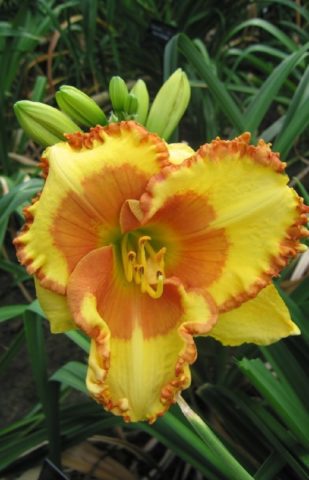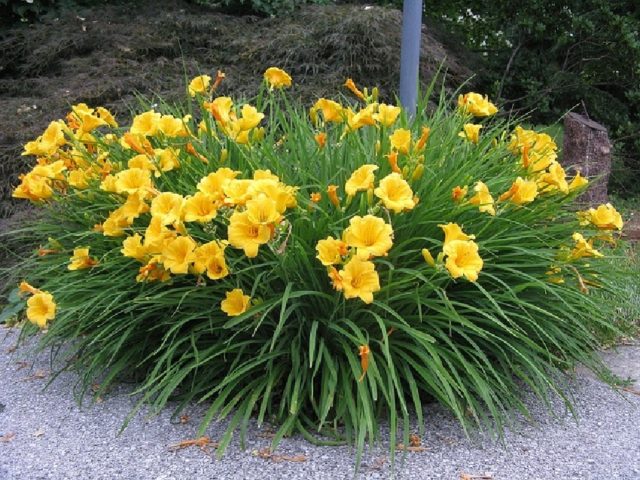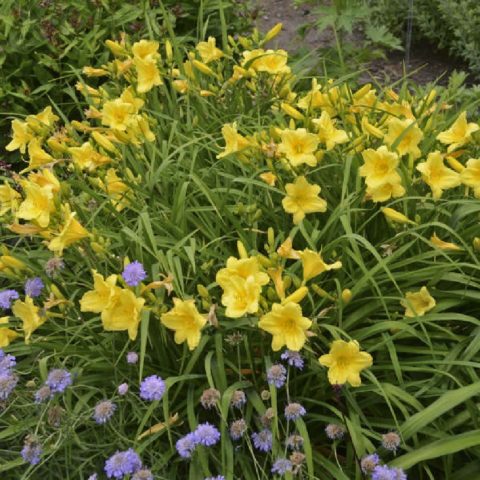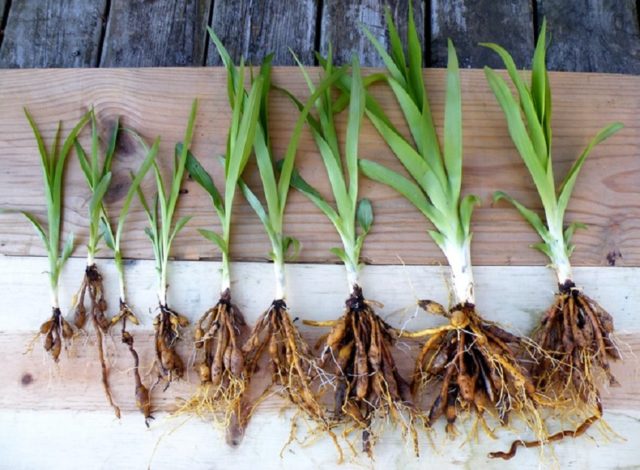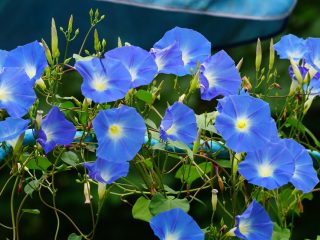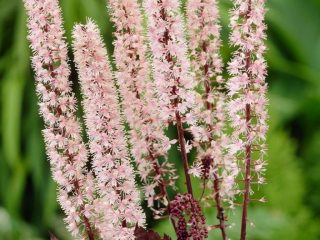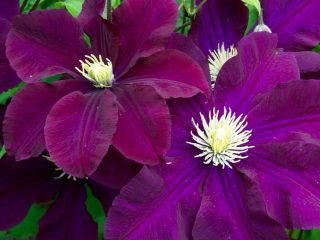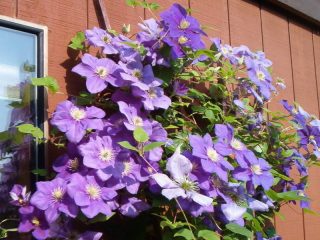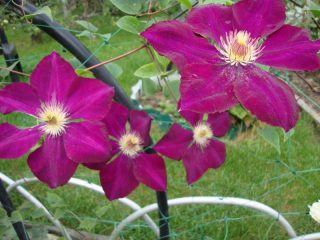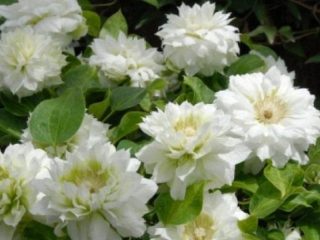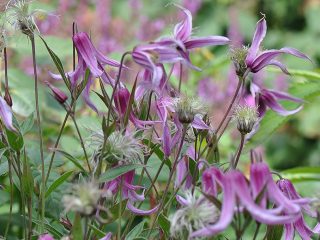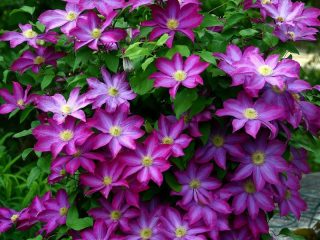Content
Yellow daylily is an amazing flower with bright inflorescences. In Latin it sounds like Hemerocallis. The name of the plant comes from two Greek words - beauty (kallos) and day (hemera). It displays the peculiarity of the yellow daylily, which blooms for only one day. There are a lot of varieties, so gardeners have no difficulty choosing the right shade. It tolerates frost and wind well, which caused the plant to spread throughout the Russian Federation.
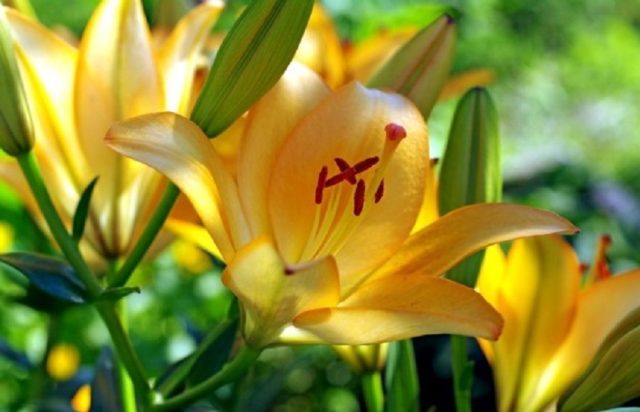
The bright color of the daylily will create a good mood even on a cloudy day.
Description of yellow daylily
Regardless of which yellow variety you decide to plant on your site, the gardener will receive a plant with a number of advantages:
- Long flowering. The perennial continuously produces yellow buds, and a new one blooms to replace the withered flower. People call daylily red daylily for this feature.
- Unpretentiousness to growing conditions and care.
- Maintaining attractiveness for a long time, a combination of different shades of foliage.
- Ability to grow in the shade.
- A huge variety of species with different shapes and shades of yellow flowers. Currently, more than 100 species of plants are known.
Yellow early daylily begins flowering in early June. Some modern varieties can please their owners with flowers as early as the end of April.

A flowering bush immediately attracts attention; it can be used to decorate a problem area
Flowering duration is more than 2 months. If summer is characterized by low temperatures and high humidity, then flowering is more abundant and longer. In appearance, the plant resembles a bush about 1 m high.
The leaves of the daylily are very beautiful - sword-shaped, narrow, curved. Peduncles are strong, without foliage. Can be straight or branched. The inflorescences consist of 5-10 flowers of yellow or lemon color.
The shape of the flower is like an elongated tube. The aroma is pronounced and pleasant. Loves moisture and warmth, does not tolerate winters with little snow and the presence of lime in the soil. To extend the flowering period, you need to promptly remove faded flower stalks.
Natural yellow varieties of daylily are distributed throughout the middle zone, the Far East, and Siberia. Among modern breeding species there are re-blooming varieties of yellow daylily. After the end of the first wave of flowering, they throw out new flower stalks. Remontant types include:
- Irresistible Charm;
The main feature of the species is the red edging of the yellow petals.
- Stella D'Oro;
The flower bush looks very voluminous and gives the area some charm
- Happy Returns;
This variety really needs good care and a warm summer.
Varieties of yellow daylily
Any variety is attractive; its rainbow color lifts your spirits and decorates even the shady corners of the garden. In addition, yellow varieties have a persistent fragrant aroma, which is superior to varieties of other shades.Among the yellow daylilies there are low-growing and tall representatives, border plants. The main differences concern:
- flower shapes;
- the beginning and duration of flowering;
- plant size.
The most common are brown-yellow, yellow and lemon yellow.
Daylily yellow
In Latin it sounds like Hemerocállis lílioas phodélus. A beautiful perennial with flower stalks up to 1 m high. It blooms in the second half of summer, from mid-July to the end of August. Some varieties bloom at the end of May. The flowers are funnel-shaped and can have different shades - yellow, golden, orange. One yellow inflorescence consists of 5-8 large flowers. The leaves are long (75 cm), narrow, green in color. There are low-growing types, even dwarf ones, tall ones, such yellow daylily is planted as a border decoration.

Juicy color distinguishes yellow daylily from its counterparts
Lemon yellow daylily
The name of the daylily in Latin is Hemerocállis citrina. Height is about 1 m, fleshy root system. Numerous lily-shaped leaves, length from 50 cm to 130 cm. Peduncles protrude slightly above the foliage, branched in the upper part. Branched inflorescence, large and fragrant yellow-lemon flowers. They open in the afternoon, towards evening. It is a rare species of night-blooming daylilies and is found naturally in China. Blooms from mid-May to late June. Leaves begin to die before frost sets in.
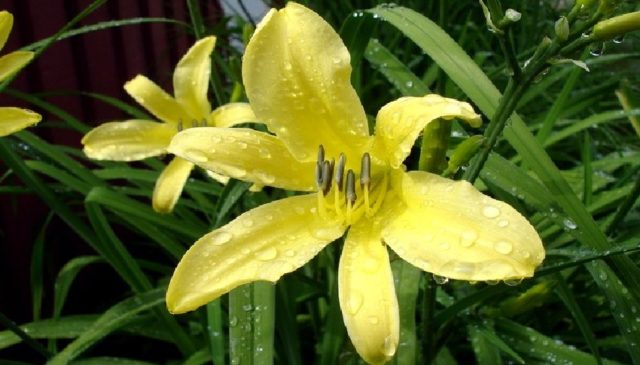
The presence of a lemon tint makes daylily more delicate
Daylily brown-yellow
Latin name Hemerocallis fulva. The most common yellow species at Russian latitudes. It is called the “calling card” of daylilies in the Russian Federation. Most often found in Transcaucasia.The leaves are dark green, linear, slightly curved. The width of the leaves is from 1.5 cm to 3 cm. The daylily bush is stable and strong, up to 1 m high. The shoots are creeping, underground. Peduncles are much higher than the leaves, branched at the top. Flowers of a rich brick color. Grows well in the shade and easily tolerates transplantation. There are many terry varieties of the variety. Blooms at the end of June, flowering duration is 2 months.
The inflorescence consists of 6-12 large broad-funnel-shaped flowers. The diameter of one is up to 10 cm. Loves good lighting. Brown-yellow daylily is not picky about soil composition, but grows better in slightly acidic, well-drained soil. You should monitor soil moisture; the species does not tolerate stagnant water at all.
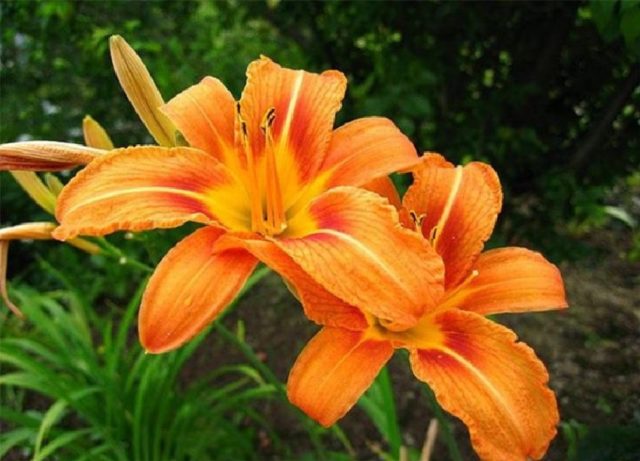
Brown-yellow daylily gives a richer color to any composition
Dwarf yellow Middendorff daylily
Latin name: Hemerocallis middendorfii. This daylily is a low-growing yellow one, its bush height does not exceed 60 cm. Flowering begins in May and continues until the end of June. May rebloom in autumn. On the territory of the Russian Federation it is found in the Amur, Far East, and Manchuria.
It settles in clearings, meadow slopes, clearings of deciduous plantings, and grows in thickets of bushes. The rhizome is thick, oblique, and has fragile lobes. The leaves are drooping, narrow (about 1.8 cm). Peduncles are taller than the leaves, their size is 80 cm. The inflorescences are apical, the flowers are bright orange with an unpleasant odor. The diameter of each is 11 cm, length 9 cm. The duration of flowering of the yellow variety is 20 days, it can bloom again in autumn days. Winter-hardy, tested in Altai.
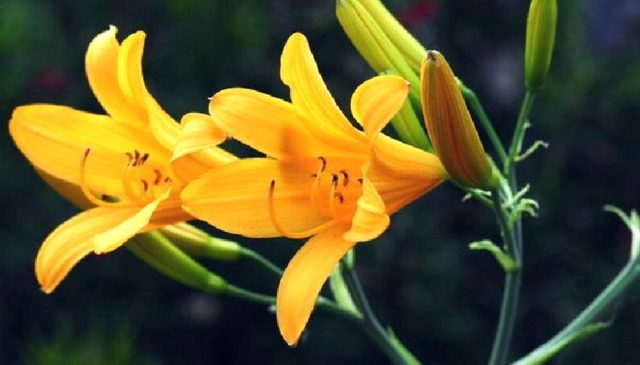
Dwarf varieties are highly valued for their ability to create borders.
Yellow daylily in landscape design
Designers often use yellow daylily when creating projects. It fits perfectly into tree and shrub compositions. Looks good near ponds, in a rose garden or on a lawn. The rich tint palette of yellow creates a unique show in any combination - with cereals, other daylilies, perennials or annuals.
Recommendations for gardeners:
- A daylily in yellow shades looks very impressive near a bench or gazebo. For a relaxation area, it creates a relaxing and at the same time cheerful mood. Many believe that culture wins even before the rose garden.
- Low-growing yellow varieties fit perfectly into the design of a rock garden or slide.
- If the fence or wall is painted in a dark color, then the yellow inflorescences of daylily will decorate it perfectly. The same can be said about red brick masonry.
- An excellent solution for border decoration of paths and garden paths, for example, yellow terry daylily.
Daylilies can be planted in group plantings or individually. In any case, it will look advantageous.
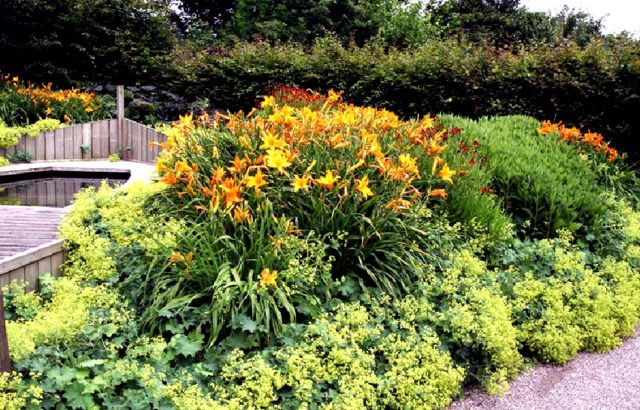
Even a minimal number of plants in the presence of yellow daylily looks like a spectacular composition
Planting and care
The unpretentiousness of yellow daylily is known to many gardeners. The plant does not require special growing conditions or complex care. However, he still has preferences. The developed powerful root system of the bush quickly forms shoots, so daylily successfully suppresses the growth of weeds on the site. The yellow perennial grows in one place for up to 10 years.
To ensure the planting process goes smoothly, some nuances should be taken into account.
The soil can be any, but heavy and with a minimal amount of clay. In sandy soil, plants are not at all comfortable; they lack moisture. The main wishes of the culture are deep digging, enough humus. Daylilies require large amounts of nutrients. It is necessary to add compost, sand, and peat to poor soil.
The place for the yellow daylily is chosen to be sunny, with partial shade during the midday hours.
The landing dates are quite flexible. Rhizomes can be planted in the spring after the snow has thawed, usually March-April. August is also considered a good period. The plant tolerates transplanting and planting well throughout the season. The main thing is to finish 1 month before the onset of cold weather.
Landing algorithm:
- Dig a hole. The depth is at least 35 cm. This will be enough to add nutrients - humus, peat, sand, potassium-phosphorus fertilizer. Leave a distance between plants of at least 70 cm.
- Prepare yellow daylily rhizomes. Remove soil and rinse with water. Remove damaged dried parts. If the roots are dry, soak them for 2-3 hours in a clay mash.
Rhizomes must be thoroughly inspected and cleaned before planting.
- Pour the nutrient mixture into the hole.
- Place the rhizome at a depth of 3-4 cm, sprinkle with garden soil. Leave the root collar at ground level, this is very important. Excessive deepening will negatively affect the development of the bush.
- Water the plant, mulch the area around the trunk with wood chips or dry peat.
Even the most inexperienced gardeners can further care for the yellow daylily.
Bright yellow daylily does not like shallow and frequent irrigation.It needs to be watered during dry periods and only at the root 1-2 times a week. Water should not get on the flower petals.
Feeding is not necessary until young leaves appear. Then it is enough to apply nitrogen-based mineral fertilizer in the spring. It needs to be scattered dry around the bush, then embedded in the soil and watered generously. The phosphorus-potassium mixture is applied in the summer 30 days after the end of flowering. It is enough for plants to fertilize 2 times a year. Regularly you will have to slightly increase the amount of nutrients due to the active growth of yellow daylily.
The crop needs pruning. This event includes the removal of flower shoots with faded inflorescences and autumn pruning of the above-ground part of the bush at a height of 10 cm from the surface of the ground.
The most optimal materials for mulching are crushed bark, wood chips, and dry peat. At the base of the shoot you need to leave some free soil for new growth. When fertilizers are applied, the mulch must be moved away and then returned to its place.
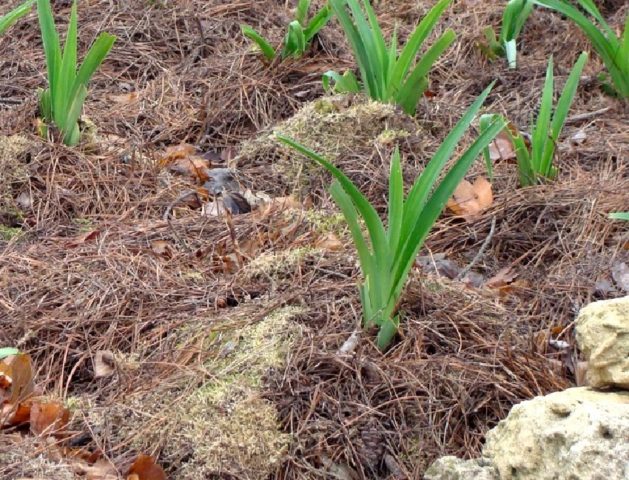
Mulching is the most reliable way to retain moisture
Plants that go dormant must be pruned and covered in the fall.
Conclusion
Yellow daylily really brightens up the area. Even 2-3 plants are enough to add cheerfulness to any composition. It is enough to plant the daylily correctly and give it a little attention.
